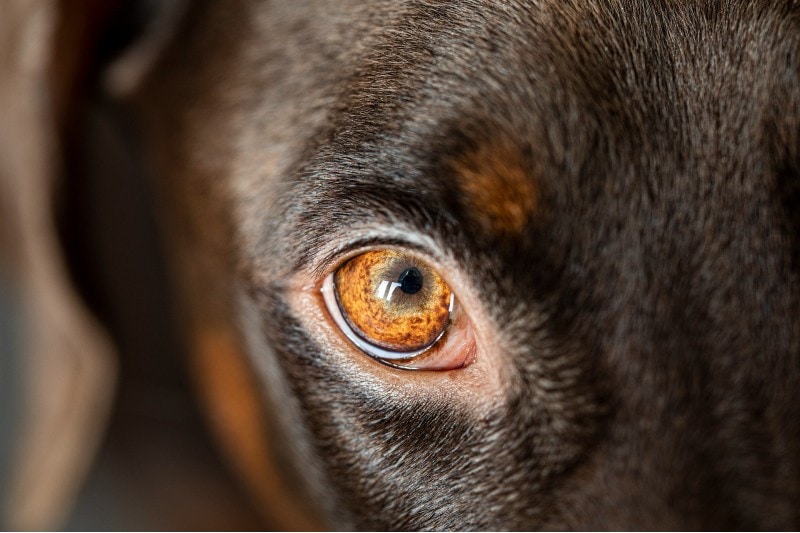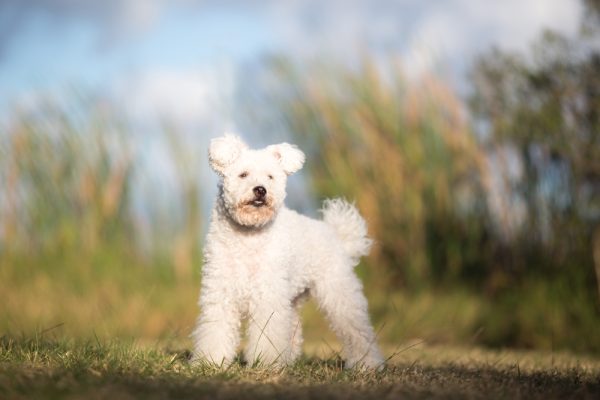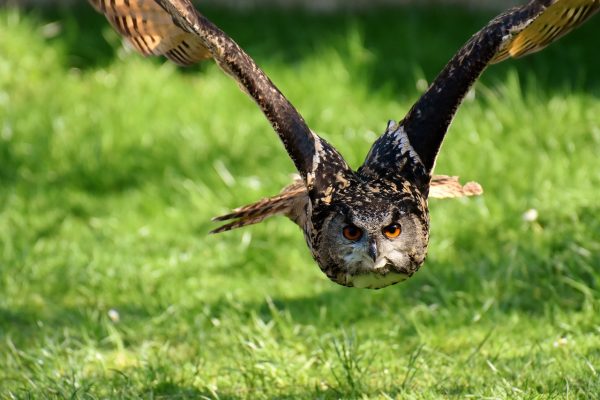In this article
There is a persistent myth that dogs have poor vision. Dogs see the world very differently from humans, but that doesn’t necessarily mean that their vision is bad. Many people are also often confused about what colors dogs can see. Some people think that dogs are colorblind and only see the world in shades of grey. But that is not true. So, what colors can a dog see? Dogs primarily see the world in four colors: blue, yellow, grey, and brown. Here’s everything you need to know about dog vision, including what colors dogs can see and what colors they can’t see.

What Colors Can Dogs See?
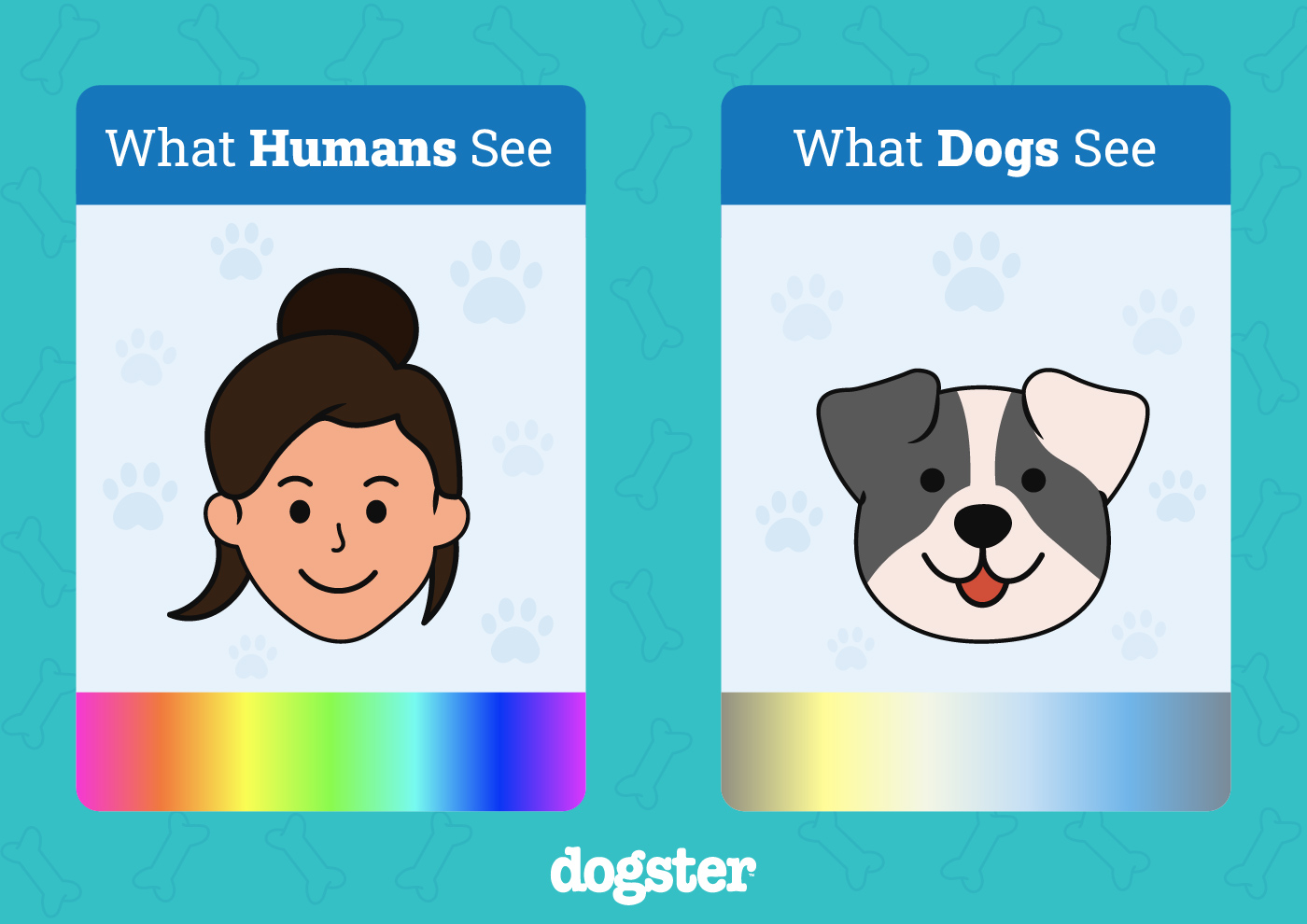
Dogs primarily see blues, yellows, and greys. Dogs can also see some browns. This is a much narrower color spectrum than humans can see. This has led to a number of different misconceptions and rumors about dog vision. Some people claim that dogs are colorblind, while others believe that dogs only see in black and white. Neither of these things are true.
In fact, determining the clarity of vision only works when comparing two like things. It doesn’t make sense to compare human vision to hawk vision, and similarly, it doesn’t really make sense to compare dog vision to human vision other than for curiosity. Dog vision is different from human vision, but that doesn’t necessarily mean that it is worse.
When imagining how dogs see the world, you should focus on blues and yellows. Any colors that dogs cannot see, such as reds and greens, will become washed out and appear yellowish, grey, or brown in color. There are numerous filters online that you can use to put over images to see how dogs see if you are curious.
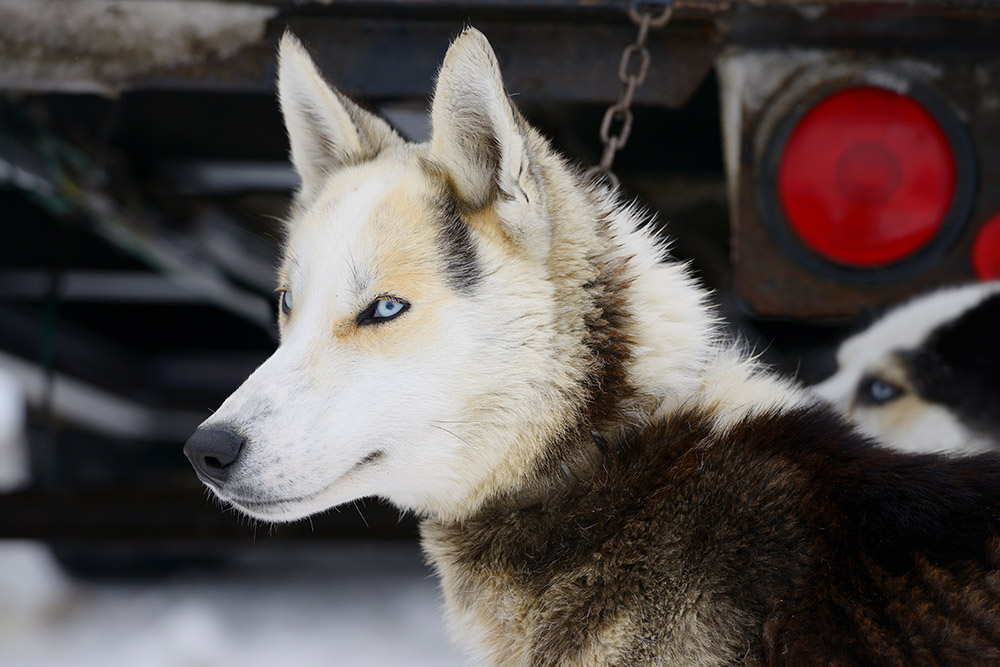
Why Do Dogs See Differently Than Humans?
Dogs see differently from humans for two main reasons. First, dogs’ eyes are structurally different from human eyes. They have more rods and less cones (the things that let us see light and color) than humans. Dogs lack the eye structures that allow them to see red and green.
Second, dog eyes are designed for a different purpose than human eyes. Dogs are crepuscular. This means that their vision is designed to work best in low or fading light. Dogs see best at dawn and dusk, and therefore, this is when they are most active and do most of their hunting. Dogs’ eyes help them see movement in low light so that they can hunt appropriately. Humans, by comparison, are diurnal. This means human vision is designed to function best during high daylight between dawn and dusk, and human vision suffers at night when the light is the lowest.
The lack of certain eye structures and the purpose of dogs’ eyes is why they have different vision from humans.
Are Dogs Colorblind?
No. Since all dogs see the same way, dogs are not colorblind when compared to other dogs. If a human were born with dog vision, they would be considered colorblind but only compared to other humans. A human with dog vision, compared to dogs, would have normal vision.
If you compare dog vision to human vision, dogs do have a form of colorblindness. They are red-green colorblind, which is the most common form of colorblindness in humans. It is unfair to label all dogs colorblind compared to humans because dogs have their own physiology and evolutionary traits that make what we see as colorblindness normal for dogs. Dogs are also not fully colorblind as they have ample ability to see colors, just not the same colors that humans see.

Do Dogs See in Black and White?
No. There is a misconception that dogs see in black and white. This is a perception that has been pushed in the media over the years and in popular culture. However, there is definitive evidence to show that dogs do not see in black and white. Dogs do see some things in shades of grey, but this is not the same as seeing everything in simple black and white.
People used to believe that dogs see in black and white before more relevant information became available. Understanding the nuances of dog vision has only developed recently, in the past few decades.
How Does Understanding Dog Vision Help Dog Owners?
One way you can use this information to great effect is by buying toys for your dog that they can actually see clearly. Dogs seem to like things like tennis balls because they are bright yellow. Giving dogs toys that are red or green will not catch their eye in the same way that a yellow or blue toy will. Some people might find that their dogs enjoy blue toys over a similar red toy. This could come down to vision and what your dog’s eyes focus on. Buying dog toys that are yellow or blue could help them engage with toys over ones that come in colors that they cannot see effectively.

Conclusion
Dogs primarily see in four colors: blue, yellow, brown, and grey. Dogs see this way because their eyes have evolved to help them hunt in low light. Dogs are not colorblind compared to other dogs. They are only considered to be red-green colorblind when compared to humans. Dogs see just fine with the eyes they have. Dogs also do not see in black and white. They do see color, just not the full spectrum of colors that humans see.
- Also see: Can Dogs See in the Dark?
Featured Image Credit: Sabrinasfotos_Pixabay
